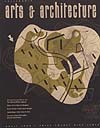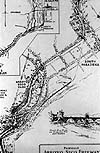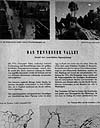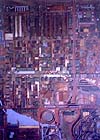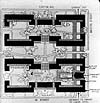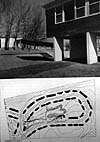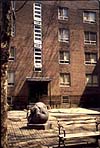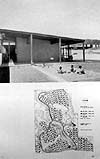*** Third assignment due
The modernism of highways, electricity and other urban infrastructure; model communities of the New Deal; American reinterpretations of European modernists; alternatives and imperialists.
READING:
Elizabeth Mock, ed., Built in USA since 1932 (New York, l945),
esp. pp. 20-25, 52-3, 62-75
Gwendolyn Wright, "Inventions and Interventions: American Urban Design
in the Twentieth Century," in Elizabeth A.T. Smith, ed., Urban
Revisions (Los Angeles, l994), pp.26-37
Recommended:
Martin V. Melosi, The Sanitary City: Urban Infrastructure in America
from Colonial Times To the Present (Baltimore, 2000)
Michael Southworth and Eran Ben-Joseph, Streets and the Shaping of
Towns and Cities (New York, l997)
Mark H. Rose, Interstate: Express-Highway Politics, 1939-1989 (Knoxville,
1990)
Anne Vernez Moudon, ed., Public Streets for Public Use (New York,
1987)
Walter L. Creese, TVA’s Public Planning: The Vision, The Reality (Knoxville,
1990)
Joel Schwartz, The New York Approach: Robert Moses, Urban Liberals
and the Redevelopment of New York (Columbus, Ohio, 1993)
Robert M. Caro, The Power Broker: Robert Moses and the Fall of New
York (New York, l974)
R.E. Somol, ed., Autonomy and Ideology, 1923-1949 (New York, l997)
Keller Easterling, Organization Space: Landscapes, Highways and Houses
in America (Cambridge, 1999)
Terry Smith, Making the Modern: Industrial Art and Design in America
(Chicago, l993)
Richard Pells, Radical Visions and Suburban Dreams (New York l974)
Donald Albrecht, ed., World War II and the American Dream (Cambridge,
l995)
QUESTIONS:
1. Is there an "American" modernism and, if so, when did it begin? What are its principles and its dominant forms?
2. Why did some American architects speak of modernism as "Geo-architecture"? How did their work respond to particular sites and ecologies, as well as the larger "transnational" sense of the American landscape?
3. How did American modernism of the New Deal and World War II respond to different ethnic and racial groups? To different socio-economic classes? To different regions of the country? How much diversity can architecture show (or respond to in other ways), without becoming narrowly parochial?
4. What are the relations between government-sponsored projects and private projects (including individual utopian visions) during the New Deal and World War II? What do we miss by only looking at one or the other? What is the relationship today between government-sponsored public projects and those of the private sector?
